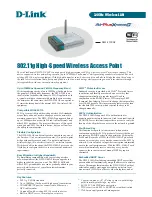
M
M
o
o
d
d
u
u
l
l
e
e
I
I
n
n
t
t
e
e
g
g
r
r
a
a
t
t
i
i
o
o
n
n
G
G
u
u
i
i
d
d
e
e
V
V
e
e
r
r
s
s
i
i
o
o
n
n
2
2
.
.
1
1
Redpine Signals, Inc. Proprietary and Confidential
Page 16
SPI mode interface connection recommendations:
For SPI communication, the host MCU which acts as a Master is connected over
SPI interface to the wireless module which acts as a slave. The following
recommendations describe hardware connections between master and slave for SPI
communication. They have to be implemented on the host MCU.
SPI_CS: The SPI_CS is a chip-select signal driven by the host. The host
should be programmed such that on powering it up, this signal should be
driven HIGH. If not, a pull-up resistor is recommended to be connected
on this line.
SPI_CLK: A clock output from the SPI master component carries the serial
clock to the slave. Based on the configuration of clock polarity (CPOL)
mode in the host MCU, a pull-up (for CPOL=1) or a pull-down (for
CPOL=0) resistor is recommended to be connected on this line.
SPI_INTR: The SPI_INTR is the interrupt signal driven by the RS9113
module to the host MCU .There are two possibilities based on which
pull-up/pull-down is recommended to be connected on this signal.
o
Active high/Leading edge interrupt mode: Connect a pull-down
resistor.
o
Active low/Trailing edge interrupt mode: Connect a pull-up
resistor.
Pull resistors can be avoided if the following programming sequence
is followed:
o
Program 9113 interrupt mode through bootloader.
o
Enable interrupt in host MCU.
The host can be programmed such that the interrupt signal has to be
in disabled state till interrupt mode (active HIGH or LOW) is selected.
Note: Pull resistors on SPI_CS (Chip Select) and SPI_CLK (Serial Clock) can
be avoided if the host executes the following sequence.
o
On power up the RS9113 module is assumed to be in reset
mode. Then, initialize the SPI master on the host MCU.
o
Release the RS9113 module out of reset mode.
Specific values of pull resistors should follow host recommendations.
















































